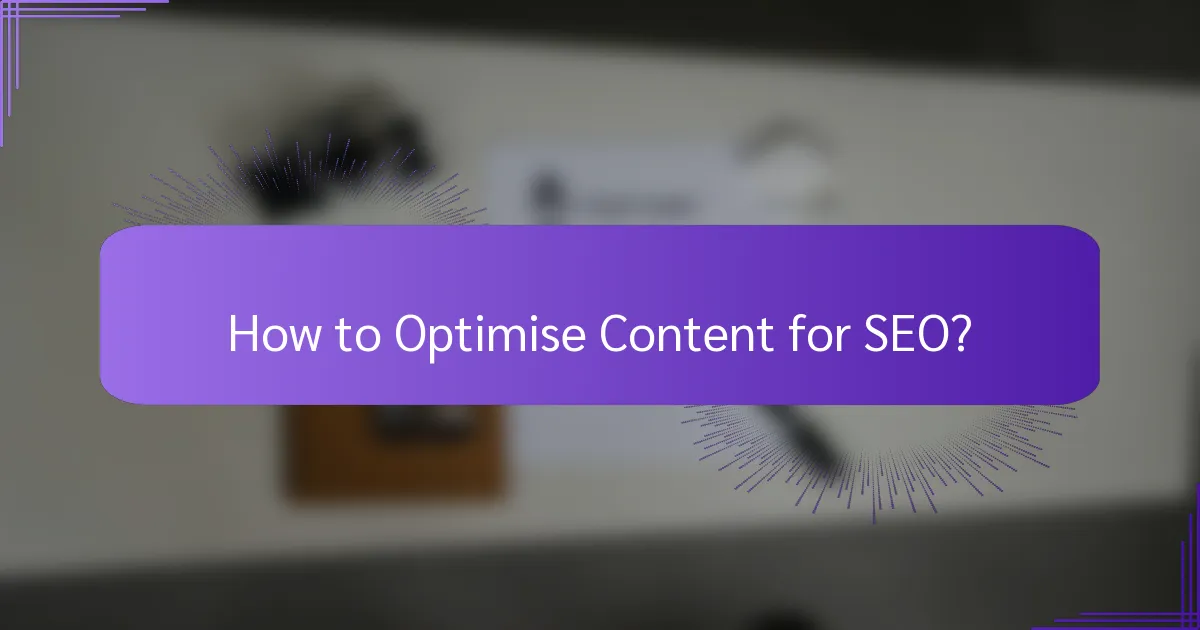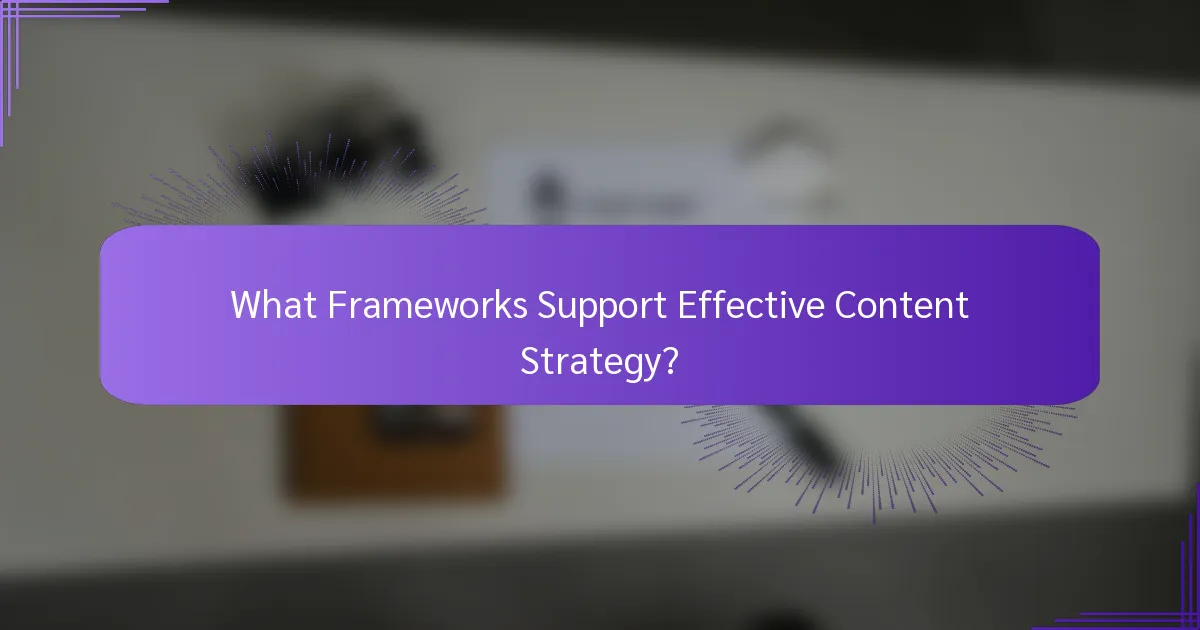Developing a successful content strategy in the United Kingdom requires careful niche selection that aligns with consumer interests while navigating competition. Engaging your audience through meaningful interactions fosters loyalty and community, essential for brand growth. Additionally, optimising your content for SEO by focusing on relevant keywords and quality can significantly enhance your visibility and drive organic traffic to your platform.

How to Select a Niche for Digital Products in the UK?
Selecting a niche for digital products in the UK involves identifying a specific market segment that aligns with consumer needs and interests. Focus on areas with demand but limited competition to maximise your chances of success.
Market Research Techniques
Effective market research techniques include surveys, focus groups, and online analytics. Use tools like SurveyMonkey to gather insights directly from potential customers, or leverage social media platforms to gauge interest in specific topics.
Additionally, consider utilising online forums and communities to observe discussions and pain points. This qualitative data can help refine your niche selection by highlighting unmet needs.
Identifying Trends with Google Trends
Google Trends is a powerful tool for identifying emerging trends in your chosen niche. By entering relevant keywords, you can see how search interest changes over time, helping you pinpoint growing areas.
Look for keywords with consistent upward trends or seasonal spikes, as these can indicate potential opportunities. Aim for niches that show sustained interest rather than fleeting fads.
Analysing Competitor Performance
Analysing competitor performance is crucial for understanding your niche landscape. Tools like SEMrush or Ahrefs can provide insights into competitors’ traffic sources, keyword rankings, and content strategies.
Focus on identifying gaps in their offerings or areas where you can provide superior value. This analysis will help you position your digital products effectively and differentiate from existing players in the market.

What Strategies Enhance Audience Engagement?
Effective audience engagement strategies focus on creating meaningful interactions and fostering community. By leveraging various platforms and content types, brands can connect with their audience, encouraging loyalty and participation.
Utilising Social Media Platforms
Social media platforms are essential for enhancing audience engagement as they provide a space for direct interaction. Brands should identify which platforms their target audience frequents, such as Facebook, Instagram, or Twitter, and tailor their content accordingly.
Consider using a mix of posts, including images, videos, and polls, to keep the audience interested. Engaging with followers through comments and messages can also build a sense of community and loyalty.
Creating Interactive Content
Interactive content, such as quizzes, surveys, and live videos, can significantly boost audience engagement. This type of content encourages participation and can provide valuable insights into audience preferences and behaviours.
For example, a brand could create a quiz related to their products, offering personalised results that users can share on social media. This not only engages users but also expands reach as participants share their results with friends.

How to Optimise Content for SEO?
To optimise content for SEO, focus on relevant keywords, quality content, and user engagement. Effective optimisation enhances visibility in search engine results, driving organic traffic to your website.
Keyword Research Tools
Keyword research tools help identify the terms and phrases your target audience uses when searching online. Popular options include Google Keyword Planner, SEMrush, and Ahrefs, which provide insights into search volume, competition, and related keywords.
When using these tools, look for keywords with moderate search volume and low to medium competition. This balance increases the chances of ranking higher in search results. Aim for a mix of short-tail and long-tail keywords to capture a wider audience.
On-Page SEO Best Practices
On-page SEO involves optimising individual web pages to rank higher and earn more relevant traffic. Key practices include using target keywords in titles, headings, and throughout the content while maintaining natural readability.
Ensure your content is structured with clear headings and subheadings, and use internal links to guide users to related content. Additionally, optimise images with descriptive alt text and ensure your website loads quickly, as page speed is a ranking factor.
Link Building Strategies
Link building is crucial for improving your site’s authority and search rankings. Effective strategies include guest blogging, creating shareable content, and reaching out to industry influencers for backlinks.
Focus on acquiring links from reputable sites within your niche. Tools like Moz and Ahrefs can help analyse your backlink profile and identify opportunities. Avoid black-hat techniques, such as buying links, as they can lead to penalties from search engines.

What Metrics Measure Content Strategy Success?
Content strategy success is primarily measured through engagement and conversion metrics. These metrics provide insights into how well your content resonates with your audience and drives desired actions.
Tracking Engagement Rates
Engagement rates indicate how effectively your content captures and maintains audience interest. Common metrics include likes, shares, comments, and time spent on page, which can vary widely depending on the platform and content type.
To effectively track engagement, use tools like Google Analytics or social media insights. Aim for engagement rates of around 1-5% for social media posts, while blog posts should ideally keep visitors on the page for several minutes to indicate strong interest.
Analysing Conversion Rates
Conversion rates measure the percentage of users who complete a desired action, such as signing up for a newsletter or making a purchase. A good conversion rate typically ranges from 1-5%, but this can vary based on industry and audience.
To analyse conversion rates, set clear goals and use tracking tools to monitor user behaviour. Focus on optimising landing pages and calls-to-action to improve these rates. Avoid common pitfalls like vague messaging or overly complex forms, which can deter potential conversions.

What Frameworks Support Effective Content Strategy?
Effective content strategy relies on structured frameworks that guide the planning, creation, and distribution of content. These frameworks help ensure alignment with business goals, audience needs, and SEO best practices.
Content Calendar Development
Developing a content calendar is essential for organising and scheduling content production. It allows teams to plan topics, deadlines, and distribution channels, ensuring a consistent flow of content that resonates with the audience.
When creating a content calendar, consider including key dates relevant to your audience, such as holidays or industry events. Tools like Google Sheets or dedicated software can help manage and visualise your calendar effectively.
Be flexible with your calendar to accommodate trending topics or unexpected changes in audience interests. Regularly review and adjust your calendar based on performance metrics to optimise engagement.
Audience Persona Creation
Creating audience personas is crucial for understanding who your content is targeting. These semi-fictional characters represent your ideal customers and help tailor content to meet their specific needs and preferences.
To develop effective personas, gather data through surveys, interviews, and analytics. Focus on demographics, interests, pain points, and content consumption habits. Aim for a diverse range of personas to cover different segments of your audience.
Once established, use these personas to guide content topics, tone, and distribution strategies. Regularly update your personas as market conditions and audience behaviours evolve to maintain relevance.

How to Adapt Content Strategy for Emerging Trends?
To adapt your content strategy for emerging trends, continuously monitor industry developments and leverage innovative tools. This approach ensures your content remains relevant and engaging to your target audience.
Monitoring Industry Changes
Staying updated on industry changes is crucial for adapting your content strategy. Regularly follow industry news, subscribe to relevant newsletters, and engage with thought leaders on social media platforms. This will help you identify shifts in consumer behaviour and emerging topics.
Utilise tools like Google Trends or social listening platforms to track popular discussions and keywords. This data can guide your content creation, ensuring it aligns with current interests and needs.
Leveraging AI Tools for Content Creation
AI tools can significantly enhance your content creation process by automating repetitive tasks and generating ideas. Consider using platforms like ChatGPT or Jasper to brainstorm topics, draft outlines, or even create initial content drafts.
While AI can streamline your workflow, ensure that human oversight is maintained for quality and authenticity. Balance AI-generated content with your unique voice and insights to engage your audience effectively.
